With a history of over 35 years, PostgreSQL has developed a strong following in the open source community, being used for a wide variety of applications. As OCI continues its growth, our customers are asking us to support PostgreSQL. We are happy to announce the General Availability of Oracle Cloud Infrastructure (OCI) Database with PostgreSQL version 14.9. This addition complements our existing lineup of open-source offerings on OCI, joining other services including OCI Cache with Redis, OCI Search with OpenSearch, and MySQL HeatWave.
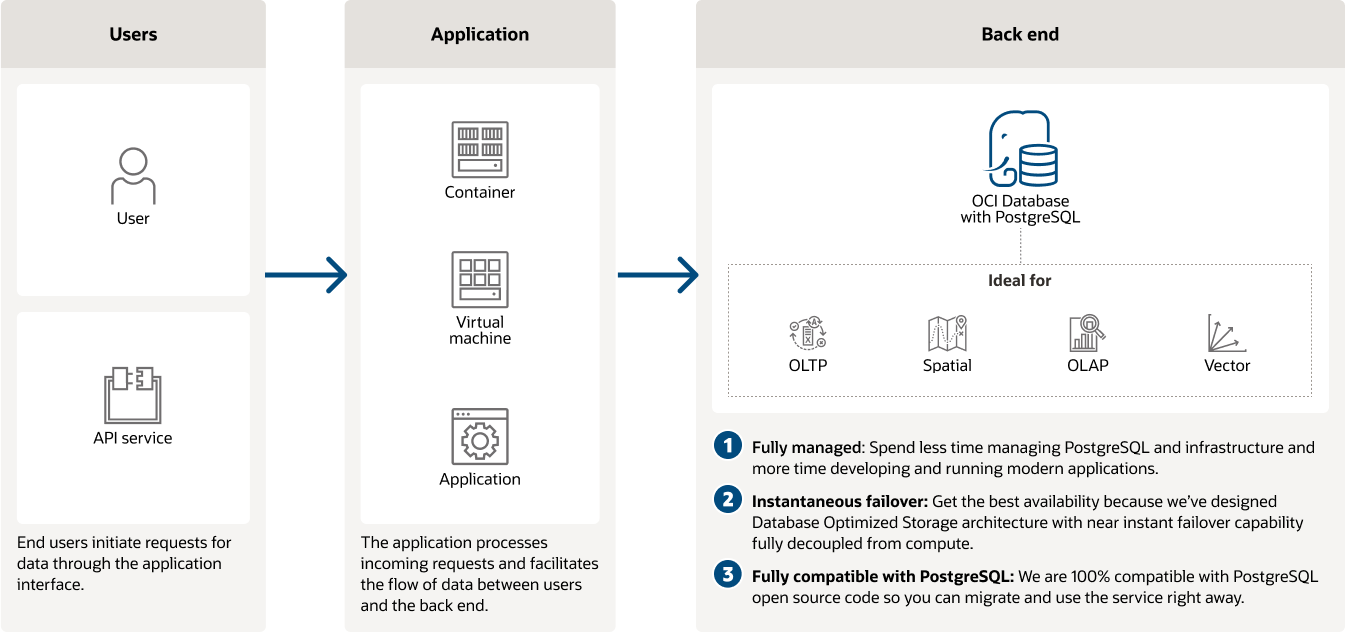
OCI Database with PostgreSQL is the ideal solution for organizations aiming to gain effortless scaling in the cloud without changing their applications. It provides full PostgreSQL compatibility while letting users take advantage of OCI’s flexible, high-performance, high-availability infrastructure with built-in security and simple pricing. In addition, this OCI implementation delivers superior scalability combined with reduced administrative demands.
.
Why OCI Database for PostgreSQL stands out
- Up to 3x higher performance 1: Thanks to our Database Optimized Storage, decoupling the SQL transaction processing engine from the storage layer has led to a significant performance enhancement compared to a standard PostgreSQL configuration.
- Less than half the cost of AWS 2 : When you run PostgreSQL on OCI, you benefit from the simple pricing and low rates for compute and storage, only paying for the resources you use and consistent pricing across all regions, whether in Phoenix, Sao Paulo, or Tokyo. The equivalent service on Amazon Web Services (AWS), Amazon Aurora PostgreSQL, is 2.5x more expensive than on OCI.
- Fully managed and enterprise ready: From automated deployment to security updates, Oracle handles all the usual maintenance tasks for you—whether it’s accommodating growing workloads or autoscaling storage.
- Trusted: As with other OCI data stores and services, OCI Database for PostgreSQL provides always-on encryption and regular security updates that increase data protection and support compliance. The service is fully integrated with the other OCI security services such as Audit, IAM, and Cloud Guard to ease security and governance management.
- High availability: With 99.99% SLA and ability to meet your recovery time objectives (RTO) and recovery point objectives (RPO) combining OCI architectural innovations and PostgreSQL database replication methodologies, we provide top-notch durability and high availability for PostgreSQL users on OCI.
- Simple user experience: Just like our other offerings, OCI Database for PostgreSQL is easy to configure. The database creation is intuitive, and when set, you get a holistic view of your running database systems. Detailed metrics further assist in monitoring the cluster’s health.
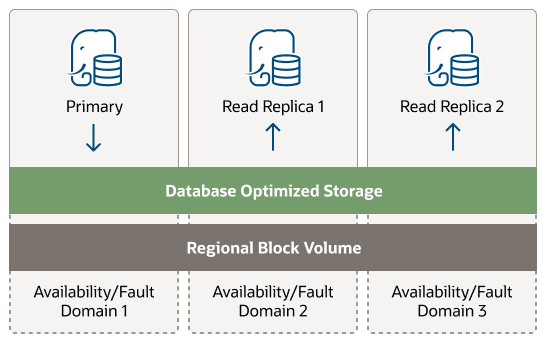
Embarking on the PostgreSQL journey with OCI
Configuring the OCI Database for PostgreSQL is akin to setting up other familiar OCI services. When the database is up, you can dive deep into specific system details or glance through key metrics, enabling seamless operation.
The following figures show the main configuration panels:
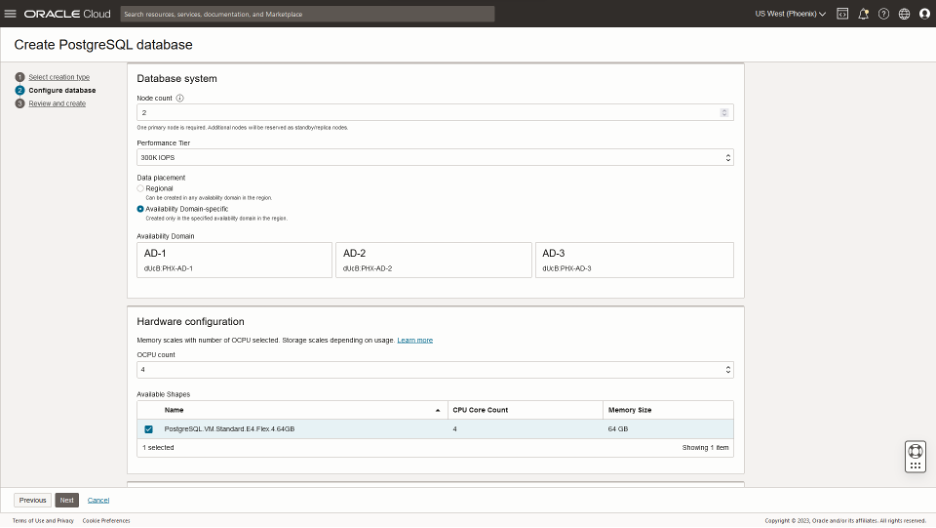
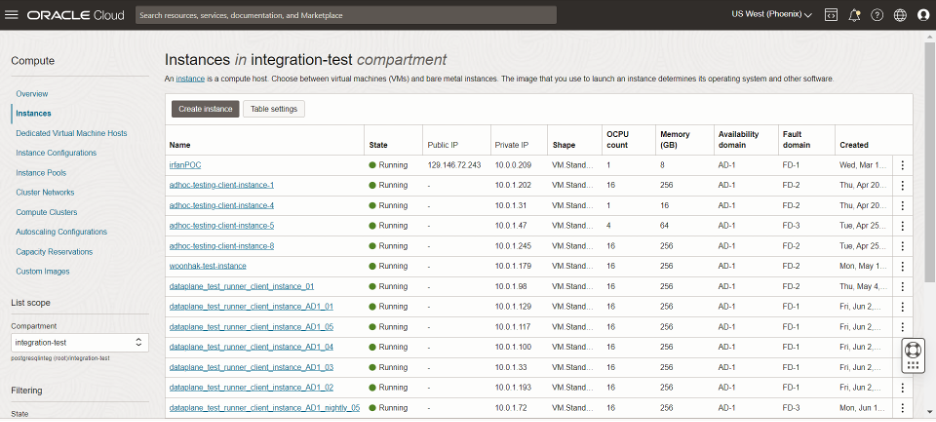
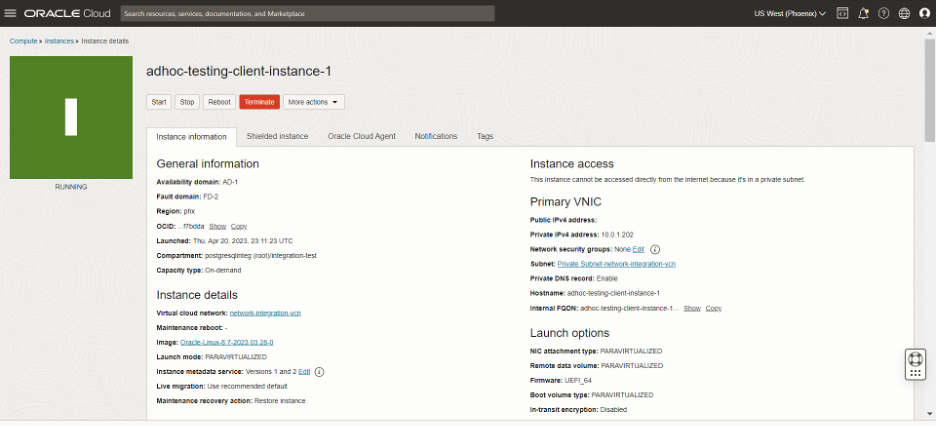
OCI continues to provide choices for open-source users with the additions of OCI Cache with Redis and OCI Search with OpenSearch to the already available MySQL HeatWave.
Learn More on OCI Database with PostgreSQL
To learn more about the key innovations behind OCI Database with PostgreSQL, check out this First Principles deep dive into its Database Optimized Storage. See our documentation for a step-by-step guide to create a new PostgreSQL cluster and sign up for a free trial account to start playing with it.
1: Performance comparison between same configurations for OCI Database with PostgreSQL and unmanaged standard PostgreSQL on OCI. Architecture is based in mixed workload on a primary using 6 Nodes with 16 OCPU, 256GB RAM and VM.Standard.E4.Flex shape and PostgreSQL version 14.9.
2: Price comparison based on 2 VCPUs having comparable performance to 1 OCPU. AWS pricing data sourced from AWS US East Region price list as of October 23, 2023. Comparison based on available OCI shapes equivalent to AWS shapes, with a storage capacity of 500 GB and a VPU setting of 50.

